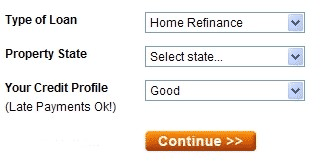Annual Percentage Rate (APR) - Glossary Term
What is the APR rate you find on your Truth in Lending disclosure and why is it different and higher than the mortgage rate you thought you were getting? This is very confusing to most people.
Either you know about APR or annual percentage rate and are told it is a way to compare mortgage offers (which you have no idea how) or you do not know about it until you see the Truth in Lending and panic because it is not the rate you thought you were getting.
APR Annual Percentage Rate Defined
The government passed The Truth In Lending Act in 1974 which mandated a disclosure of APR on all financing for the express purpose of making mortgage offers comparable. Therefore, mortgage offers are easily comparable by looking at the APR, right?
Wrong!
The Annual Percentage Rate (APR) is a yearly rate of interest that includes fees and costs paid to acquire the mortgage. Lenders are required by the Federal Truth in Lending law to disclose the APR.
In a nutshell, certain costs outlined in the Act are calculated into the rate in a consistent and codified way thus bringing a “comparability” to mortgage offers that did not exist.
At least, that was the intention.
When a lender quotes a rate, they are required to also quote an APR. That way if the lender was advertising a low rate and loading the mortgage up with a ton of fees, the deception would show up in the APR.
Like most regulatory things the government dreams up, it doesn’t work.
Current Mortgage APR
Current mortgage APR is as different as current mortgage rates. Each mortgage company and lender could calculate the APR differently.
Mortgage APR VS Rate
Mortgage APR is not the rate used to calculate your payment. Your mortgage rate or note rate is disclosed on the first page of the mortgage application, the Good Faith Estimate, and on the Truth in Lending. The APR is disclosed only on the Truth in Lending and it is just for disclosure.
Previous Post:« Add On Fees - Glossary Term
Next Post:» Service Release Premium – Glossary Term
Tags: Annual Percentage Rate • APR • Mortgage Rate


Leave a Reply